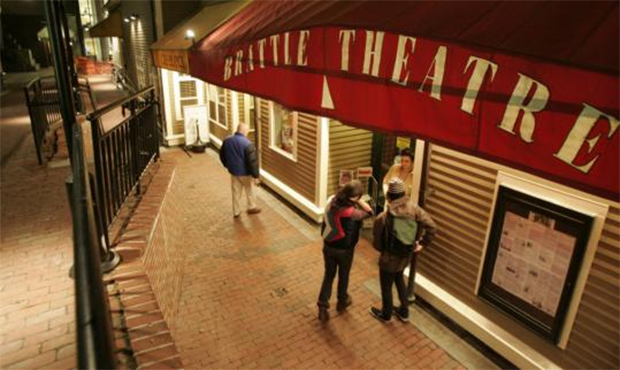Brattle Theatre

The Brattle Theatre, currently a movie theatre, originally started as a live performance space. Brattle Hall was commissioned and built by the Cambridge Social Union in 1889 as a space for weekly entertainments. Membership cost $1. The theatre opened in 1890 and was then used by the Cambridge Social Dramatic Club from 1891 through the 1930’s. The Cambridge Social Dramatic club, or as it was called then, the Cambridge Dramatic Club, was established in 1876 and originally had no theatre space whatsoever. Plays were performed in members’ homes until the group moved into the Arsenal Theatre. The Arsenal Theatre was torn down in 1885, which meant that the group needed a new space to perform. The Cambridge Dramatic Club was renamed the Cambridge Social Dramatic Club in 1891, and the group moved into Brattle Hall. “Social” was added into the name to remind the group’s members that the club was meant to combine both the dramatic features of the original club with the social features of a Saturday evening club. This meant that each season had four plays followed by snacks and dancing all performed at Brattle Hall. The club was known for performing a variety of shows, ranging from Restoration Classics, to Gilbert and Sullivan operettas.
Brattle did not only host the Cambridge Social Dramatic Club from its opening in 1890 through the 1930’s. Brattle Hall housed a ballet school, dances, church services, lectures, and police calisthenics. It was also during this early period that the Brattle established itself as an artists’ haven. In 1928 the mayor of Cambridge banned the Harvard Dramatic Club’s production of Fiesta, a political drama. The Brattle defended and premiered the show. The Brattle also hosted the West End production of Othello before its run on Broadway in 1942. The production was important because it had black actor, Paul Robeson, in the part of Othello. The part was usually performed by an actor in blackface. The Brattle established itself as a sort of revolutionary company, unafraid of political theatre.
The next stage of the Brattle’s history begins with its purchase by the Harvard Veterans’ Theatre Workshop in 1948, which renamed itself the Brattle Theatre Company. The company performed both classics and new works, and hired blacklisted actors, including Zero Mostel, who performed in Moliere’s The Imaginary Invalid in 1950. The Brattle Theatre Company did not last long, however.
In 1953 owner, Bryant Haliday, a founding member of the Brattle Theatre Company, returned from studies in France to find that the Brattle was significantly in debt. During his time in France he became inspired by French cinema and decided to revamp the theatre into an art film house. Haliday and his friend, Cyrus Harvey, also a member of the Brattle Theatre Company, imported in a rear projection system from a cruise ship, so that people could still sit in the balcony. The first film shown at the new Brattle was a German film, The Captain from Kopenick. In 1955 Harvey and Haliday founded Janus Films, which distributed foreign films across the nation. They also challenged the Massachusetts blue laws, which prohibited them from showing films on Sundays, as it would disturb the peace of the Lord’s Day. The Brattle won and the Massachusetts Supreme Court repealed the 1908 law.
Live performance was not over at the Brattle. In 1955 Haliday and William Morris Hunt established the Brattle Shakespeare Festival, which performed Othello and Henry IV in the summer, when the movie house was dark. The productions were so popular that they moved into a bigger theatre and were given the American Shakespeare Festival’s Stratford Award. These were essentially the last live performances at the Brattle, save for a production of The Winter’s Tale in 1990 and a few other performances in the 1980’s.
The Brattle continues as an art film house. Janus Films was sold in 1966 and the original balcony was torn down in the 1970’s. The Brattle itself changed owners several times, and filed for bankruptcy in 1986. In 1987 new owners bought the Brattle and returned it back as an independent, repertory cinema.